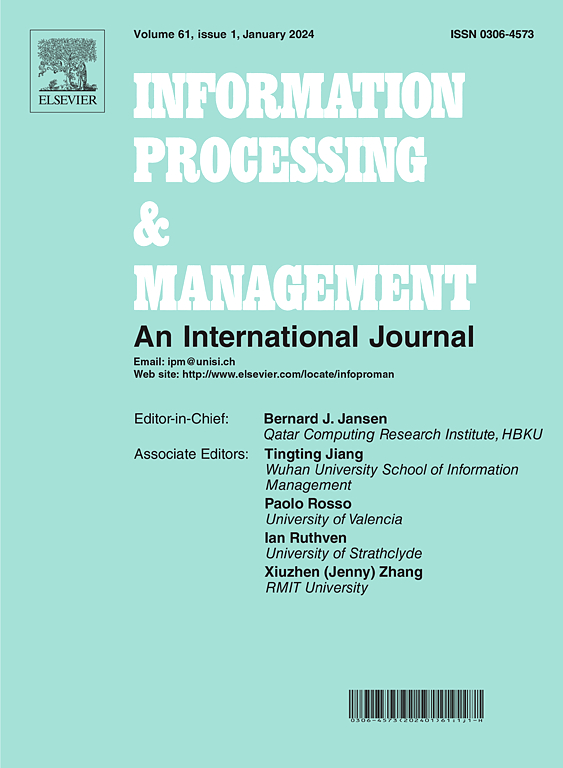Exploring hate speech dynamics: The emotional, linguistic, and thematic impact on social media users
IF 7.4
1区 管理学
Q1 COMPUTER SCIENCE, INFORMATION SYSTEMS
引用次数: 0
Abstract
Online hate speech has become a critical issue, particularly during the COVID-19 pandemic, when anti-Asian sentiment surged across social media platforms. However, the causal mechanisms driving emotional and behavioral shifts in users posting hateful content remain understudied. This study investigates the causal relationship between engaging in hateful content and changes in linguistic and emotional expression on social media. Using a dataset of 6,002 Twitter/X users, we employ causal inference techniques, including propensity score matching, and advanced topic modeling to compare users posting hateful content with a matched group of non-hateful users. Our main findings can be summarized as follows: (a) Users who post hateful content show significantly higher levels of anger, anxiety, and negative emotions, along with increased third-person pronoun usage. (b) Moral outrage and profanity levels peak during hateful posts but decline over time, while remaining elevated compared to non-hateful posts. (c) Hateful posts are more interconnected, cover more diverse topics, and are more similar to one another, revealing lower cohesion within individual posts but higher cohesion across posts. These findings contribute to understanding the causal effects of online hate speech on user behavior, offering actionable insights for social media platforms to mitigate the spread of hateful content and its broader societal impact.
探索仇恨言论动态:对社交媒体用户的情感、语言和主题影响
网络仇恨言论已成为一个关键问题,特别是在2019冠状病毒病大流行期间,反亚洲情绪在社交媒体平台上激增。然而,推动用户发布仇恨内容的情感和行为转变的因果机制仍未得到充分研究。本研究探讨了参与仇恨内容与社交媒体上语言和情感表达变化之间的因果关系。使用6,002个Twitter/X用户的数据集,我们采用因果推理技术,包括倾向得分匹配和高级主题建模,将发布仇恨内容的用户与匹配的非仇恨用户组进行比较。我们的主要发现可以总结如下:(a)发布仇恨内容的用户表现出更高水平的愤怒、焦虑和负面情绪,同时增加了第三人称代词的使用。(b)道德愤怒和亵渎的程度在仇恨帖子期间达到顶峰,但随着时间的推移而下降,但与非仇恨帖子相比仍然较高。(c)仇恨帖子相互联系更紧密,涉及的主题更多样化,彼此之间也更相似,表明单个帖子内部的凝聚力较低,但帖子之间的凝聚力较高。这些发现有助于理解网络仇恨言论对用户行为的因果关系,为社交媒体平台提供可操作的见解,以减轻仇恨内容的传播及其更广泛的社会影响。
本文章由计算机程序翻译,如有差异,请以英文原文为准。
求助全文
约1分钟内获得全文
求助全文
来源期刊

Information Processing & Management
工程技术-计算机:信息系统
CiteScore
17.00
自引率
11.60%
发文量
276
审稿时长
39 days
期刊介绍:
Information Processing and Management is dedicated to publishing cutting-edge original research at the convergence of computing and information science. Our scope encompasses theory, methods, and applications across various domains, including advertising, business, health, information science, information technology marketing, and social computing.
We aim to cater to the interests of both primary researchers and practitioners by offering an effective platform for the timely dissemination of advanced and topical issues in this interdisciplinary field. The journal places particular emphasis on original research articles, research survey articles, research method articles, and articles addressing critical applications of research. Join us in advancing knowledge and innovation at the intersection of computing and information science.
 求助内容:
求助内容: 应助结果提醒方式:
应助结果提醒方式:


